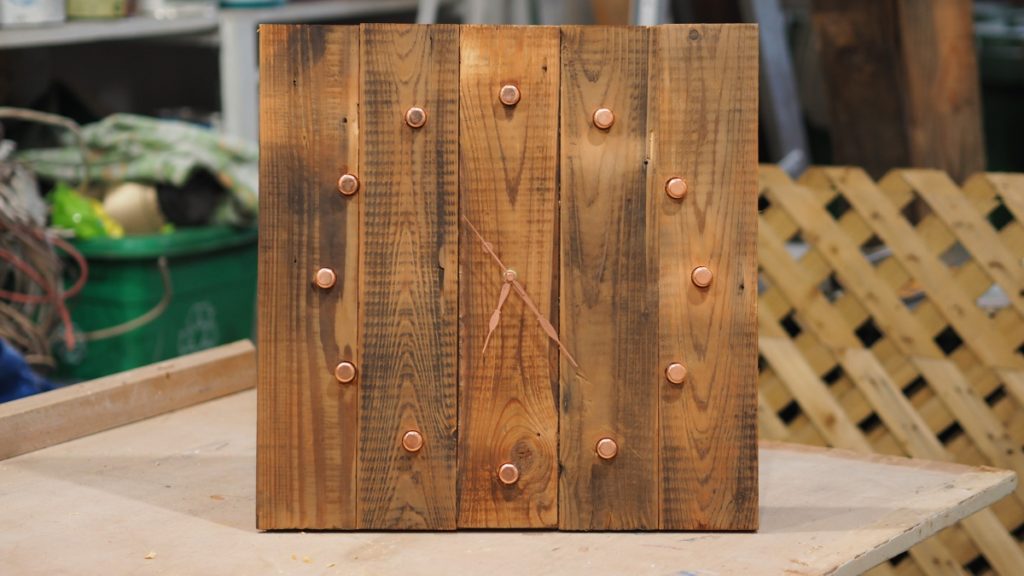DIY Reclaimed Pallet Wood Clock
Here are the materials you’ll need:
- Reclaimed wood, preferably barn wood or pallet wood
- (12) 1/2 inch copper pipe end caps
- Wood glue
- Quartz clock movement
And the tools:
- Miter saw
- Orbital sander
- 220-grit sanding disks
- Cordless drill
- 3/4 inch forstner bit
- Protractor angle finder
- Re-sealable clear silicone
- String
Prep the wood
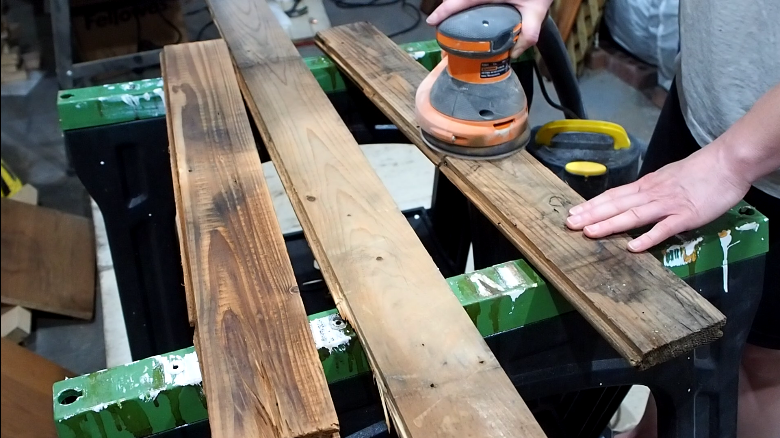
If you haven’t already done so, you’ll want to clean off the wood to remove most of the soot and grime left behind over the years. Hose off the wood and let it dry, then lightly sand using an orbital sander and 220-grit fine sandpaper.
This clock is going to be square, roughly 18 inches by 18 inches. Set up a stop block at the miter saw and cut all the pieces to length. You’ll also need 2 extra shorter pieces, about 16 inches long.
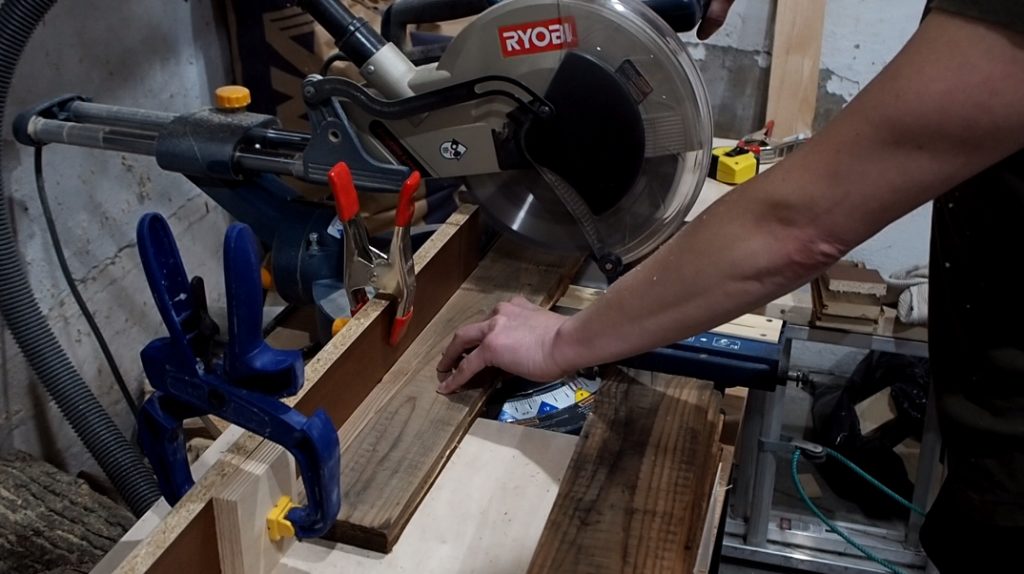
Assemble the wood
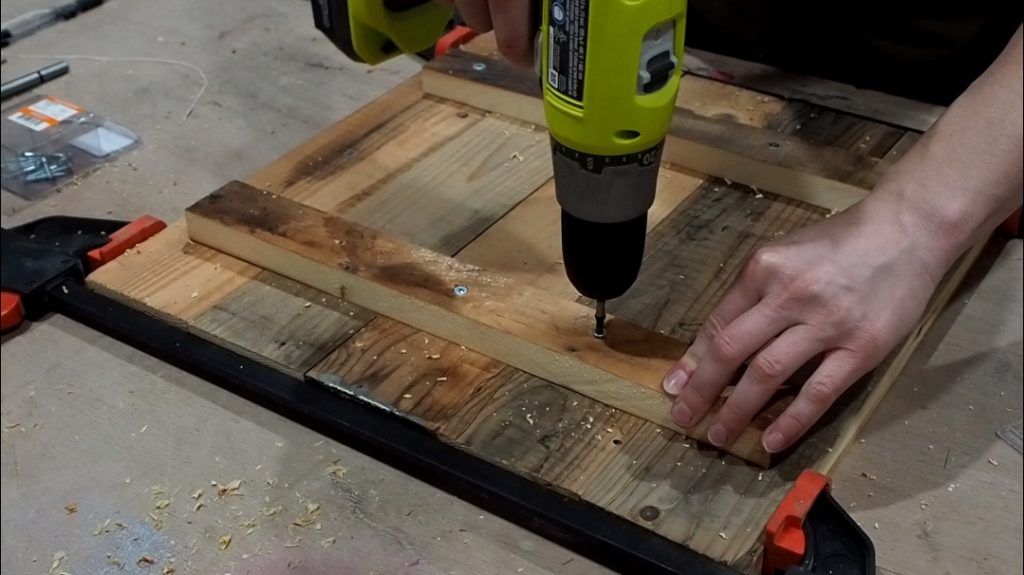
Start by laying out your pieces to find the best looking arrangement, then flip all the pieces over so it’s face down. Apply some glue between the seems and press them together, then lay the 2 shorter pieces perpendicularly across the back and screw them down. This will not only help strengthen the clock, but will also allow sufficient space for the clock movement.
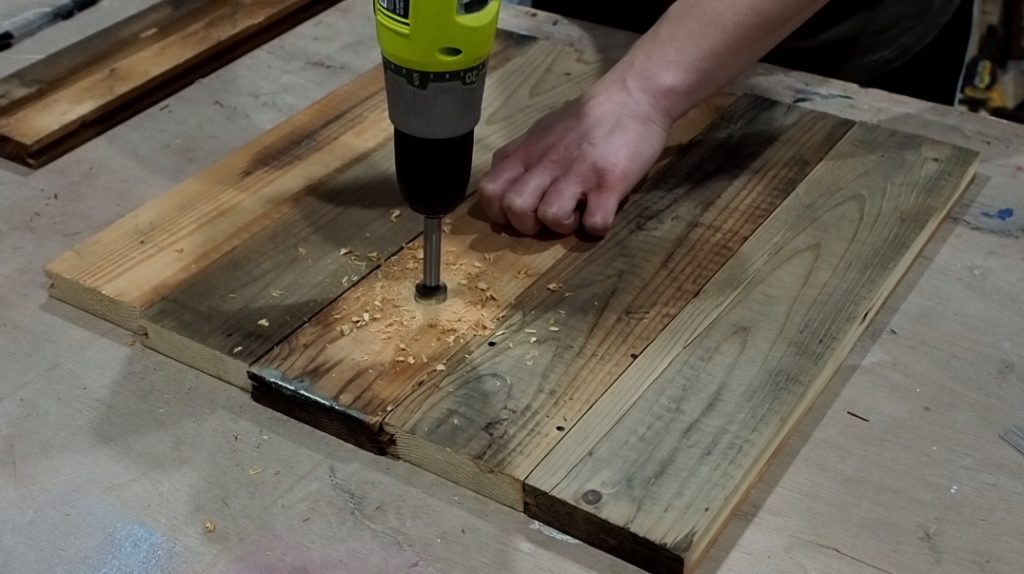
Thinking ahead, I want to be able to hang this clock on the wall. I decided to first countersink a shallow hole using my 3/4 inch Forstner bit before installing the cross supports.
Prep the face
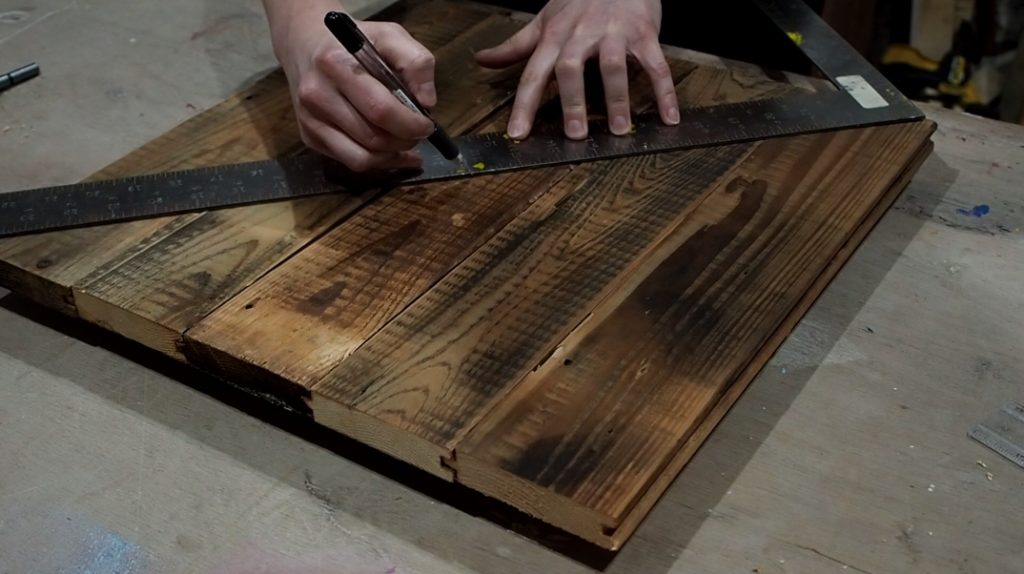
Now it’s time to flip the clock back over and assemble the face. Start by finding the center point and make a small hole with a drill. Find a drill bit that matches the size of your clock movement’s shaft and enlarge the hole to fit it through.
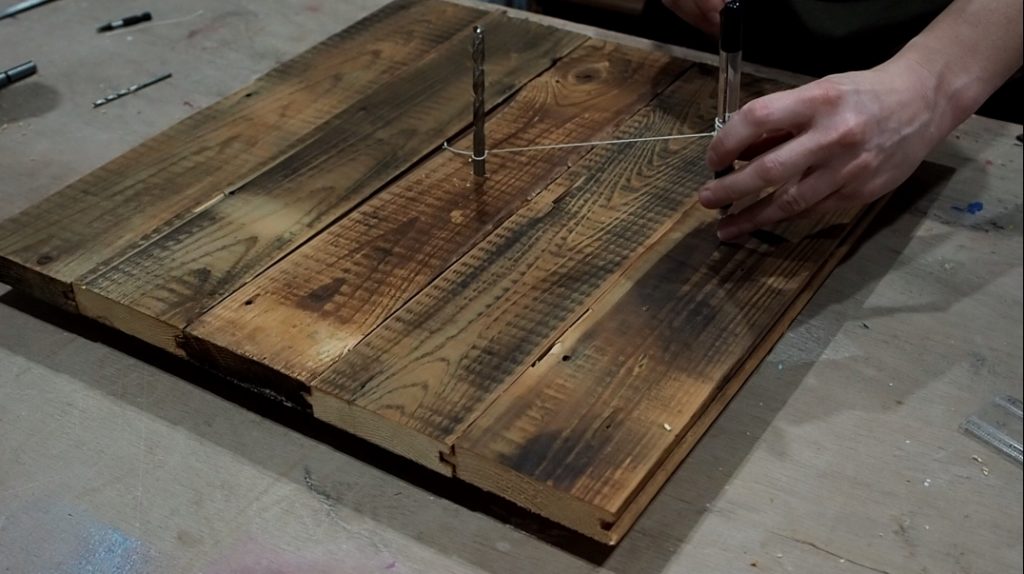
Leave the drill bit in the hole and tie a string to it. Attach a pencil to the other end and draw a circle keeping the string taught.
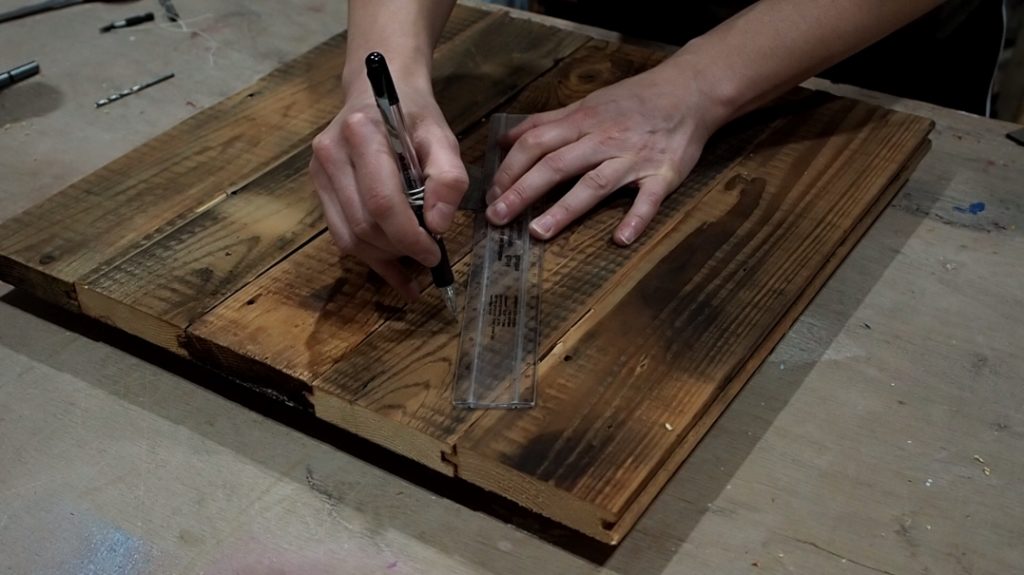
Next, use a protractor angle finder (or even a ruler and protractor if you have one) to mark 30 degree angles along your circle.
Install copper pipe hands
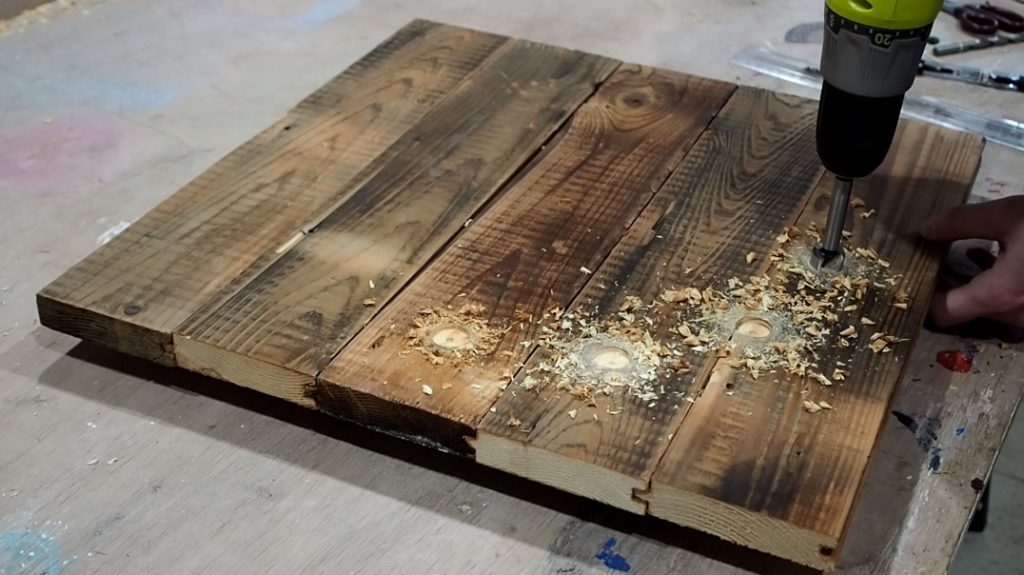
Grab your cordless drill and a 3/4 inch Forstner bit. Make 12 shallow holes on the clock face where your marked it. If you have any remaining pencil marks, make a quick pass with your sander to get rid of them before the next step.
![]()
Apply a small bead of silicone within each hole and place a copper pipe cap. Why silicone you ask? Silicone bonds to both wood and copper, plus it dried in less than 30 minutes.
Install the clock movement
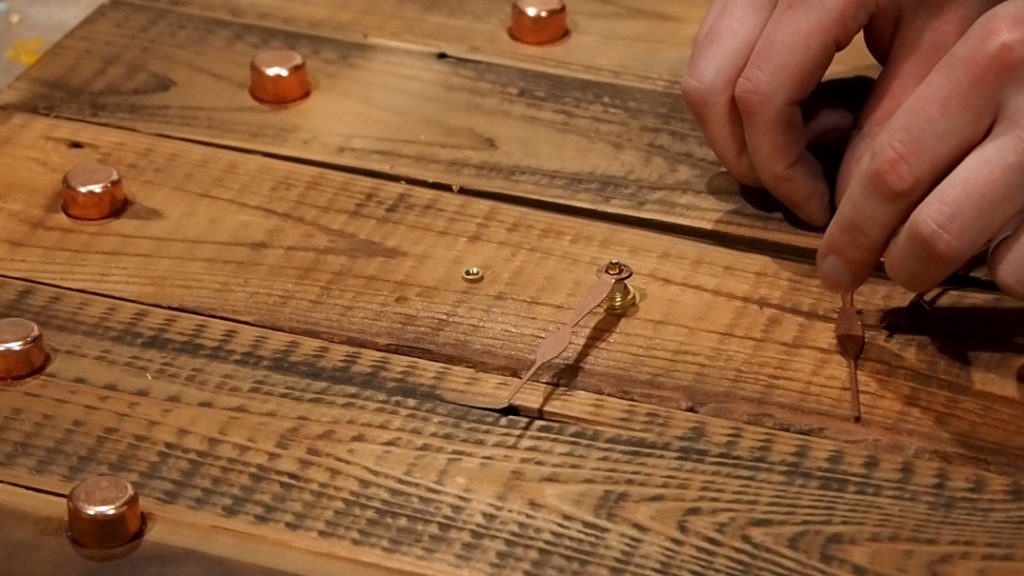
Ideally you want a clock movement with a shaft that matches the thickness of your wood. In my case, that was 3/4 inch. The clock mechanism is super easy to install, just follow the diagram in the instructions.
You can stain the wood or apply some poly, but I really love the raw rustic look of this clock. So why mess with a good thing?
Did you know that DIY Montreal has a YouTube channel? Click here to check it out!
